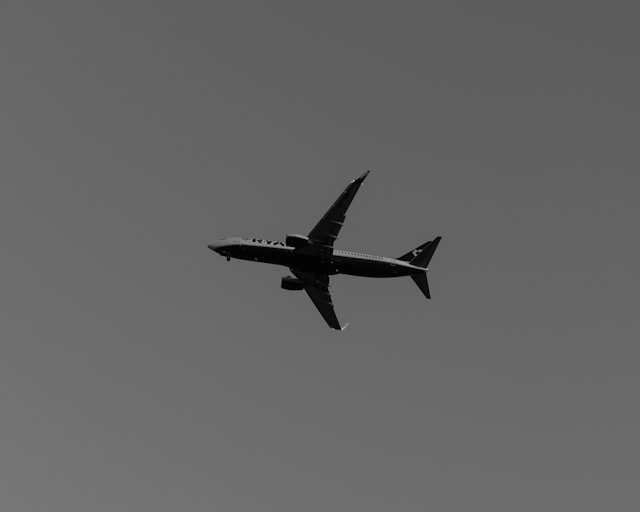Many aspiring pilots dream of becoming commercial pilots. While obtaining your first pilot’s license is a significant achievement, becoming a professional pilot requires a whole new set of skills and knowledge. This guide will help you understand what it takes to succeed in advanced training if you’re ready to move on from the basics.
Why Become a Commercial Pilot?
To get paid to fly, you need a Commercial Pilot License (CPL). Career opportunities include:
- Airline Pilot: Flying passengers for commercial airlines.
- Charter Pilot: Conducting private flights for clients.
- Cargo Pilot: Transporting freight and goods.
- Flight Instructor: Teaching others how to fly.
- Corporate Pilot: Flying private jets for businesses.
Requirements and Prerequisites
Before starting your commercial pilot training, you must meet several requirements:
- Private Pilot License (PPL): You must already have a PPL to begin CPL training.
- Flight Hours:
- Total Flight Hours: Typically, a minimum of 250 flight hours is required.
- Specific Hours: This includes cross-country, night flying, and instrument flying hours.
- Medical Certificate: You need a second-class medical certificate to ensure you’re fit to fly professionally.
- Age: You must be at least 18 years old to obtain your CPL.
Components of Advanced Training
Commercial pilot training covers advanced topics and skills, including:
- Advanced Maneuvers:
- Steep Turns: Executing tight, controlled turns.
- Chandelles: Climbing turns with a 180-degree change in direction.
- Lazy Eights: Precision turns that change pitch and bank angle.
- Complex Aircraft: Learning to fly complex aircraft with flaps, retractable landing gear, and controllable-pitch propellers.
- Cross-Country Flying:
- Longer Distances: Planning and flying longer trips.
- Diversion Techniques: Handling unexpected changes and finding alternative airports.
- Instrument Training:
- Instrument Flight Rules (IFR): Flying solely by reference to the aircraft’s instruments.
- Weather Conditions: Managing various weather scenarios, including flying in clouds and low visibility.
- Night Flying: Advanced training for night navigation and landings.
- Emergency Procedures:
- Engine Failures: Managing single or multi-engine failures.
- System Malfunctions: Handling electrical, hydraulic, and other system issues.
The Written Exam
To earn your CPL, you must pass a written exam covering:
- Advanced Aerodynamics: Understanding complex flight principles.
- Meteorology: In-depth knowledge of weather patterns and their impact on flight.
- Navigation: Advanced navigation tools and techniques.
- Regulations: Comprehensive understanding of aviation regulations and laws.
- Aircraft Systems: Detailed knowledge of aircraft components and functions.
The Checkride
The final step to obtaining your CPL is the checkride, which includes:
- Oral Exam: Discussing various topics with an examiner to demonstrate your knowledge of commercial operations, regulations, and aircraft systems.
- Practical Flight Test: Demonstrating your ability to handle a complex aircraft through advanced maneuvers and emergency procedures, including cross-country and instrument flying.
Tips for Success
Here are some tips to help you excel in your commercial pilot training:
- Consistency:
- Regular Practice: Fly frequently to keep your skills sharp.
- Study Routine: Create a daily study schedule to stay on top of your coursework.
- Utilize Simulators:
- Flight Simulators: Practice maneuvers and emergency procedures to build confidence and skills.
- Seek Feedback:
- Instructors: Listen to your instructors and ask for constructive feedback.
- Peers: Discuss topics and practice maneuvers with fellow students.
- Address Weaknesses:
- Identify Areas: Determine where you need improvement and focus on those areas.
- Additional Training: Don’t hesitate to request extra training if needed.
- Stay Healthy:
- Medical Fitness: Maintain good health to pass medical exams.
- Stress Management: Develop stress management techniques to remain calm and focused during training.
Career Opportunities
With a CPL, numerous career paths open up:
- Airline Pilot: Work for commercial airlines, flying domestic and international routes.
- Charter Pilot: Conduct private flights for individuals, companies, or tour groups.
- Cargo Pilot: Transport goods and freight for companies like FedEx and UPS.
- Flight Instructor: Teach aspiring pilots and help them earn their licenses.
- Corporate Pilot: Fly executives and employees to business meetings on private jets.
- Agricultural Pilot: Use aircraft to apply fertilizers and pesticides on farms.
- Emergency Services Pilot: Assist with search and rescue, firefighting, or medical transport.
Conclusion
Training to become a commercial pilot is challenging but rewarding, equipping you with the knowledge and skills to fly complex aircraft, perform advanced maneuvers, and navigate various weather conditions. With dedication and effort, you can earn your CPL, opening the door to exciting career opportunities in aviation. Whether you aspire to work for a major airline, instruct future pilots, or fly private jets, the sky is the limit for your aviation dreams. Happy flying!



